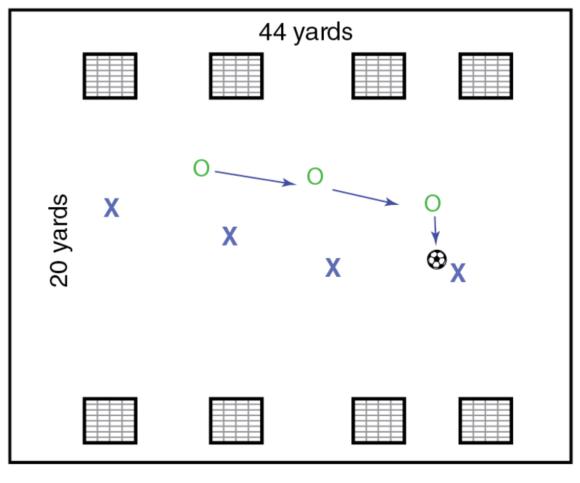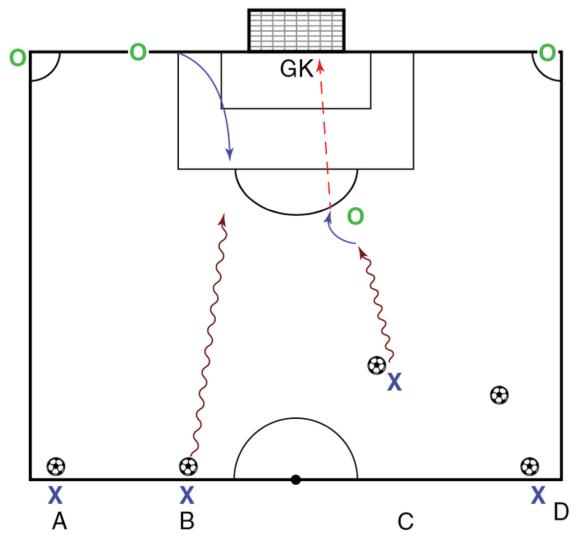Functional Exercises
This is an excerpt from Soccer Science by Tony Strudwick.
The real teaching part of defending is establishing roles and responsibilities and emphasizing the importance of providing cover and distances. Here is an example of a functional defending exercise.
Functional Defensive Training Exercise 1: Team Defending When Outnumbered
Three defenders play against four attackers in a 20-by-44-yard area (figure 20.7). The defenders start the exercise by passing to the attackers and then sprinting out to cut off the space in front. The objective of the four attackers is to score in any of the four minigoals ahead. If the defenders win the ball, they can transition and score in the four minigoals on the other side.

Functional defensive training exercise 1: team defending when outnumbered.
Coaching points can be addressed in exercises like this. The role of the first defender; the supporting distance of the second and third defenders; and the importance of staying compact, communicating, and dealing with situations in which the attacking team interchanges are all areas that defenders need to apply in a game. The exercise also challenges defenders to deal with overloads, which is a huge part of the modern game.
Functional Defensive Training Exercise 2: Penalty Area Defending
Another functional exercise designed by Neil Adair takes place inside the 18-yard box. Four defenders and a goalkeeper stand on the goal line opposite four attackers, each with a ball, who are named A through D (figure 20.8). The exercise begins when the coach calls one attacker, who dribbles and has 5 seconds to create a shot against the opposite defender. After that ball, those two players stay inside the 18-yard box and the coach calls another player who brings the ball in to create a 2v2. The pattern continues as the exercise develops into a 3v3 and finishes with a 4v4.

Functional defensive training exercise 2: penalty area defending.
Because the exercise takes place inside the penalty box and has a time restriction on the attacking team, the defenders need to apply pressure quickly and delay the attackers. The basics of defending and communication are necessary for success because the players who react quickest to the coach's call will most likely be successful. The relationship between goalkeeper and defender is also highlighted. This exercise helps teams establish a winning defensive mentality.
Learn more about Soccer Science.
More Excerpts From Soccer ScienceSHOP

Get the latest insights with regular newsletters, plus periodic product information and special insider offers.
JOIN NOW


